main navigation start
Toggle navigation
main content start
Search Filters
Sharex Sites List
Language
Topics
Topics
- Accountability (3)
- Adolescents (39)
- Birth Registration (1)
- Breastfeeding (20)
- Cash Transfer (3)
- Child and youth participation (19)
- Child Health (236)
- Child labour (4)
- Child marriage (18)
- Child Poverty (10)
- Child Protection (50)
- Children in alternative care (5)
- Child Rights (17)
- Climate, Energy and Environment (56)
- Community engagement (89)
- Convention on Child Rights (2)
- COVID-19 (122)
- Data/Evidence (115)
- Disability (95)
- Disaster Risk Reduction (14)
- Discrimination (2)
- Early Childhood Development (55)
- Education (28)
- Emergency Response (2)
- Female genital mutilation (25)
- Gender (51)
- Gender Based Violence (22)
- HIV/AIDS (41)
- Humanitarian Response (10)
- Immunization (131)
- Infant and Young Child Nutrition (20)
- Innovation (35)
- Justice for children (4)
- Knowledge Exchange and Sharing (35)
- Knowledge Management (42)
- Legal identity (3)
- Maternal Health (56)
- Mental Health (26)
- Migrant and displaced children (12)
- Migration (10)
- Newborn Health (60)
- Nutrition (160)
- Online protection (1)
- Partnerships (8)
- Peacebuilding (2)
- Polio (6)
- Poverty (1)
- Psycosocial support (7)
- Sexual exploitation and abuse (11)
- Sexual Violence (14)
- Social Behaviour Change (59)
- Social Policy (21)
- Social Protection (15)
- Social service workforce (81)
- Sustainable Development Goals (8)
- Technology for Development (13)
- (-) UNICEF Programming (37)
- UN Water Conference (6)
- Urban (8)
- Violence against children and women (20)
- Violence in schools (2)
- Water. Sanitation and Hygiene (208)
Resource Type
Document Type
- Academic journal articles (including pre-print submissions) (4)
- Agreements (0)
- Case studies, lessons learned, field notes (4)
- Corporate reporting (0)
- Data set (0)
- Evaluations (0)
- Forms and templates (0)
- Guidelines/SOPs/checklists (1)
- Human Interest Stories (3)
- Major publication (flagship, advocacy etc.) (1)
- Meeting documents and reports (0)
- Mobile Application (0)
- Monitoring reports (0)
- Newsletters (1)
- None (1)
- Online learning/e-learning course (0)
- Other technical publications and reports (1)
- Policy brief/briefing notes/fact sheets/FAQs (1)
- Posters, brochures, pamphlets, flyers (0)
- Presentation (0)
- Research report (10)
- Situation analyses (0)
- Situation reports (0)
- Speeches and Statements (0)
- Staff working paper/discussion paper (0)
- Strategies and Frameworks (1)
- Systematic reviews, knowledge mappings, evidence synthesis (1)
- Technical note (6)
- Toolkit/Toolbox (1)
- Training materials (1)
- Video (0)
Country
Published Date Range
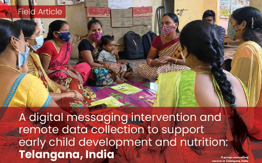
Case studies, lessons learned, field notes
This article explores the development of a digital messaging intervention and of methodologies to collect data remotely during the COVID-19 pandemic in Telangana, India, which targeted message recall,...

Academic journal articles (including pre-print submissions)
High prevalence of anaemia is a severe public health problem in India. In 2018, India launched the Anemia Mukt Bharat (AMB) strategy that focuses on six beneficiary groups for coverage, six institutio...
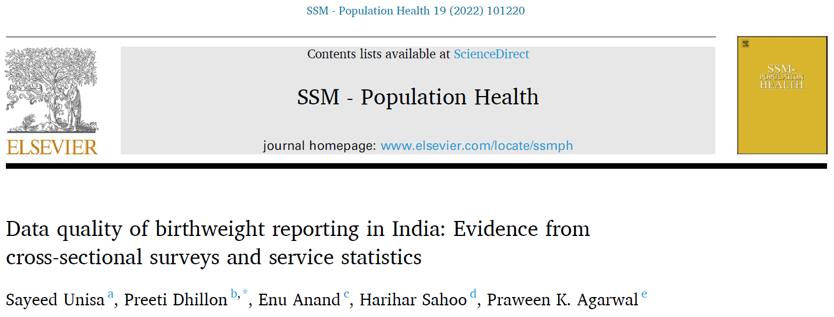
Academic journal articles (including pre-print submissions)
The study aims to assess the quality of birthweight data collected in two surveys, including the National Family Health Survey (NFHS) and the Comprehensive National Nutrition Survey (CNNS), and as ...
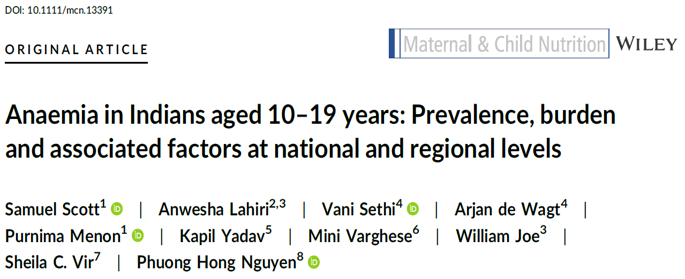
Academic journal articles (including pre-print submissions)
Anaemia control programmes in India are hampered by a lack of representative evidence on anaemia prevalence, burden and associated factors for adolescents. The aim of this study was to: (1) describe t...
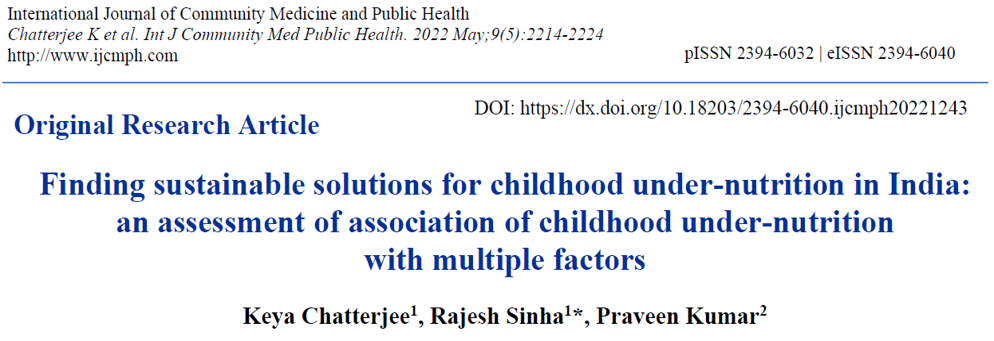
Research report
Background: Burden of malnutrition among children is very high in India. Under-nutrition is an interplay of different factors. The present study tried to understand the correlation between child under...

Research report
Digital hemoglobinometers have been used as point-of-care tests (POCT) to estimate the burden of anemia in community-based studies and national-level surveys in India. As the accuracy of hemoglobin es...

Academic journal articles (including pre-print submissions)
Suboptimal dietary intake is a critical cause of poor maternal nutrition, with several adverse consequences both for mothers and for their children. This study aimed to
Assess maternal dietary patter...

Technical note
Gender-based violence (GBV) is a global pandemic that affects 1 in 3 women in their lifetime. Nutrition and gender-based violence are intricately interlinked. Poor nutrition can make individuals, part...
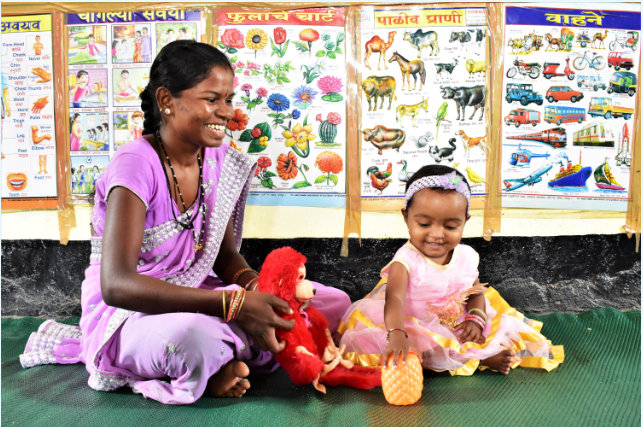
Technical note
Adequate nutrition, access to healthcare, opportunities for early learning and responsive caregiving significantly contribute towards children attaining their full human potential as recognized by Gov...

